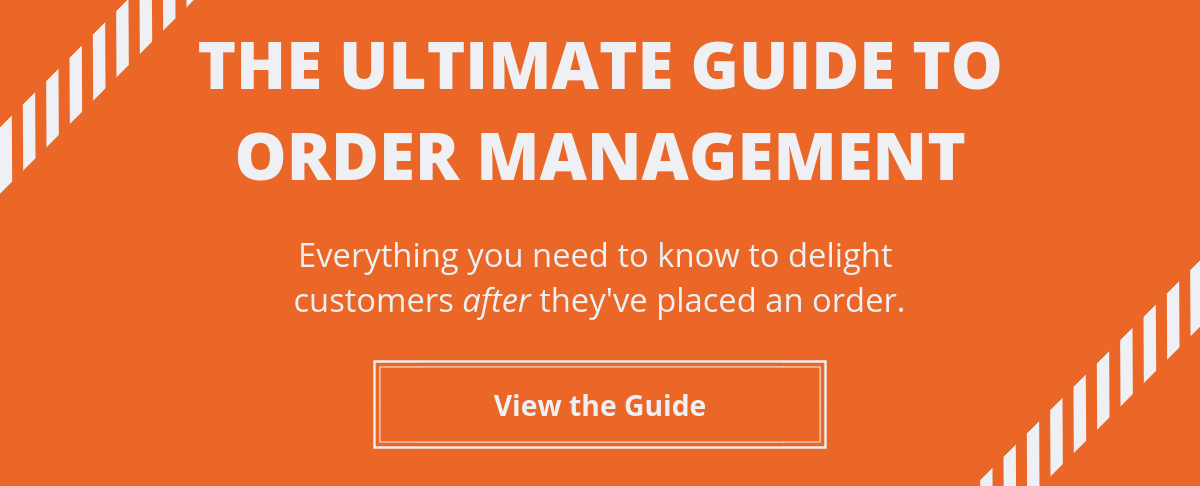This happens all the time. You’re minding your own business, selling through a bunch of different channels - and adding more all the time.
Say you’ve got an ecommerce operation, and you’ve just added your first storefront (woohoo!)
What happens next? How do you marry the operations of the two locations together in the best way possible? How do you make sure that your inventory is being tracked correctly, that everyone is following the correct processes?
It’s not as easy as flipping a switch. Especially since last mile logistics can end up being almost 30% of the total cost to move goods.
There's a lot of detail that goes into managing inventory, and with multiple locations, it only gets more complex.
Common Problems When Managing Inventory at Multiple Locations
A few of the most frequent issues that arise when a business first extends to multiple locations are:
- Inventory levels don’t match
- Multiple systems (warehouse/retail)
- In store fulfillment
- Orders are fulfilled multiple times (or not at all)
- Over- or under-stocking
We don’t need to unpack and go into great detail for every single problem. They were all created from some change in the business, we just need to adapt and overcome.
These types of issues are to be expected, since chances are the system being used for inventory management might need to be upgraded to handle multiple locations.
Communication, as always, is key.
Sometimes that communication between team members to make sure processes are being followed to the T.
And sometimes it’s communication between systems or tools to keep accurate records.
But how do you solve these challenges presented when managing inventory at multiple locations?
Begin With the End in Mind
There’s a reason this is a habit of highly effective people - it works.
What is the desired end state when you have multiple locations?
Don’t start small. Be ambitious.
A dozen physical stores, several websites, and growing sales from every channel means that inventory and fulfillment operations have to run very smoothly in order to scale well.
If everything were to go perfectly, you’d have:
- Always up to date inventory counts
- Customers taking full advantage of in-store fulfillment, ship-to-store, and ship-from-store
- Online orders routed to the location best suited to fulfill them
- A dashboard or overview of what inventory you have, where it is, and how many you expect to sell in the future
All of that doesn’t come easy. It requires improvements to processes, software, and ultimately people doing the work and committing to it.
Multi Location Inventory Management System
This type of system provides the level of detail, comprehensive feature set, and integrations that can be the perfect fit for a business with multiple locations.
The main features you should look for are:
Cloud-Based System
A cloud-based inventory management system is inherently more effective for multiple locations.
Different users, roles, and individuals can log in from anywhere, and it should be able to interface with other systems you use - such as a point-of-sale system or ecommerce platform.
Automation or Routing
The ability to send orders or inventory to the correct area for fulfillment, without having to do it manually, is a huge competitive advantage for businesses that sell through multiple channels.
If you have five locations that are in different states, the price and speed of shipping to a customer’s home is going to be different for each.
Your system should be able to choose the optimal combination of speed and cost to satisfy both the customer and your fulfillment KPIs.
Inventory Notifications
Not knowing when you’ll run out of stock is terrifying. Having too much on hand is uncomfortable.
A good inventory management system can set you up right in between those two, and let you know when stock is expected to run out, so you can reorder. It’ll also forecast upcoming sales, so when there’s a big sale coming up, you’re prepared.
Reduction in Manual Decision Making
There’s a reason Barack Obama only had suits in gray and blue, he needed to make important decisions every day, and he didn’t want to suffer from decision fatigue.
All of us make thousands of decisions per day, and each erodes our ability to make good decisions.
An inventory management system that can be programmed to make those decisions for you is a good use of computing power.
For instance, individual warehouse employees packing orders for fulfillment don’t need to choose the type of box, packing materials, and layout of the products in the box.
That’s something that can be automated, so that they spend their time packing, instead of making packing decisions.
A common misconception is that having a computer perform the work of a human will jeopardize jobs. That couldn’t be further from the truth. By removing mundane decisions from employees, they are able to be more productive, the company is able to scale without hiring or training new team members, and everybody is in for a raise.
Training
Really good training across the organization will also help reduce errors and make managing inventory across multiple locations much more straightforward.
Keep in mind - there will always be problems. Issues will always come up, but by having these items in place, you can make the most of your inventory, wherever it may be.
Don’t let your inventory get out of hand! There are many tools available for omnichannel selling - but make sure that after the order is placed, you have something capable of routing, tracking, and sorting inventory that works in every location.
Next up, check out our comprehensive guide to order management, and see how inventory fits into the big picture.












